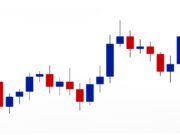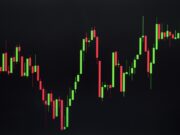Markets suffered another rocky week to close out the month and quarter with a sharp selloff that brought the major indices back to their lowest levels of the year. The late summer downturn extended into September, and the major indices fell for the third quarter in a row. On Monday, the Dow joined the Nasdaq and the S&P 500 in bear market territory and closed the week around 3% lower. The S&P 500 and the Dow posted monthly declines of around 9%, and the Nasdaq dropped more than 10%.
Market volatility has re-emerged since the last FOMC meeting. Investors are now pricing in a 57% chance that the central bank will hike rates by 75 basis points at its upcoming November 2nd meeting, up from a 0% chance one month ago, according to CME’s FedWatch tool. Markets see rates hitting a peak of 4.5% in July 2023, up from 4% a month ago.
The labor market will be in focus this week with the release of September’s nonfarm payrolls report, August’s JOLTS report, and ADP’s private-sector payrolls report. This new round of employment data will show investors whether the Fed’s rate hikes are starting to dent growth.
Investors are also looking to earnings season, which starts in October, as they gauge how a strong dollar and snags in the supply chain will affect companies’ profits. This week we can expect key earnings reports from denim maker Levi Strauss and beverage giant Constellation Brands.
Since the U.S. government officially introduced the first-ever tax credit for energy storage projects, there has been remarkable positive business developments in the industry. Our first recommendation is a company set to gain in the coming years as the trend takes hold.
NextEra Energy (NEE) is the world’s largest solar and wind energy producer. They’re the owner of Florida Power & Light, along with some other utilities and businesses that do wholesale energy. They’re also the sponsor of NextEra Energy Partners, which is primarily renewable energy focused. Renewables are a big part of NextEra’s business. The company has emerged as the world’s most valuable utility, primarily by betting on renewables, especially wind. NextEra had about 30 gigawatts of wind and solar farms at the end of last year, enough to power 17 million homes. And it’s expanding significantly, with contracts to add another 10 gigawatts of renewables.
For decades, NextEra Energy has been reducing emissions through the development of renewable energy and modernization of its generation fleet. The company’s goal is to reduce CO2 emissions rate by 67% by 2025, from a 2005 baseline. This equates to a nearly 40% reduction in absolute CO2 emissions, despite the company’s total expected electricity production almost doubling from 2005 to 2025. Working toward this goal, as of year-end 2021, NextEra has reduced its CO2 rate by 62.2% and the absolute CO2 tons by 20%, while their generation increased by 67.5%. That’s pretty impressive.
NextEra Energy has more energy storage capacity than any other company in the U.S., With more than 180 MW of battery energy storage systems. The company leads the industry with storage innovations such as its Babcock Ranch Solar Energy Center – the largest combined solar-plus-storage facility in the country. This cutting-edge project incorporates a 10-MW battery storage project into the operations of a 74.5-MW solar power plant.
NextEra has a solid track record of success. Between 2006 and 2021, their adjusted earnings per share grew at a compound annual growth rate of 8.4%, while dividends grew at a compound annual growth rate of 9.4%, that’s incredible growth over 15 years. Over the past five years, the stock is up 137% on a total return basis. That type of performance is not typical for a utility company, indicating that NextEra is an outlier in the industry.
Not all stocks from the main defensive sectors are a buy right now, but our following recommendation is currently gaining steam in a market being rocked by recession fears.
Multi-national healthcare and managed care provider Centene Corporation (CNC) has been a beneficiary of the latest uptick in healthcare and seems ready to build on that strength amid a market being rocked by fears of recession.
Over the past four quarters, earnings increased an average of 21%, and revenue increased an average of 15%. Centene beat first-quarter predictions, with revenue rising 24% year over year. Analysts predict that CNC earnings per share will increase 8% in 2022. Profits are seen ramping up, with 9% growth seen this year and growth of 13% expected in 2023.
Centene recently increased its 2022 full-year guidance, citing increased Medicaid premium revenue and “favorable” performance in the second quarter. For 2022, the company increased its Premium and Service Revenues guidance range by $2.0 billion to a new range of $134.3 billion to $136.3 billion and has increased its Adjusted Diluted EPS guidance range by $0.15 to a new range of $5.55 to $5.70.
Funds and other institutional investors are key backers of the stock, with 67% of shares currently held by big money. As of March, 2,269 funds owned CNC shares, an increase of 124 since December, according to MarketSmith.
As the leader in managed care, Centene provides high-quality, affordable products to nearly 1 in 15 Individuals across the nation, mainly through government-sponsored healthcare programs. The $100-billion plus enterprise ranked No. 24 on the 2021 Fortune 500. The pros covering CNC give it a solid Buy rating and a median price target of $103, representing a 32% increase from Friday’s closing price.
Amid the global energy crisis, defense stocks are a solid choice. “You’re immune from economic shock because the market for defense goods bears no relation to commercial demand for anything in the civil economy,” said Richard Aboulafia, a managing director with AeroDynamic Advisory.
What better way to tap into the potential of defense contractors than through an Exchange Traded Fund (ETF)? For investors seeking exposure to just the top names in the industry and those that are most impacted by the trends of the sector, the iShares U.S. Aerospace & Defense ETF (ITA) provides exposure to the aerospace and defense sector, where companies tend to be rather large, slow growing, but remarkably stable due to the widespread use of long-term government contracts for most of their services.
ITA tracks a market-cap-weighted index of US-listed manufacturers, assemblers, and distributors of aircraft and aircraft parts primarily used in commercial or private air transport and producers of components and equipment for the defense industry, including military aircraft, radar equipment, and weapons. The fund caps its holdings to meet diversification requirements, limiting a single company to 22.5% of the fund’s assets and preventing completely unbiased exposure to the top few that dominate the industry. Concentration risk remains high despite the caps, reflecting the undiversified nature of the industry. Despite this, ITA still allocates holdings to a mixture of large, mid, and small-cap companies. The fund uses a representative sampling strategy instead of replicating the underlying index. The index is rebalanced quarterly.















